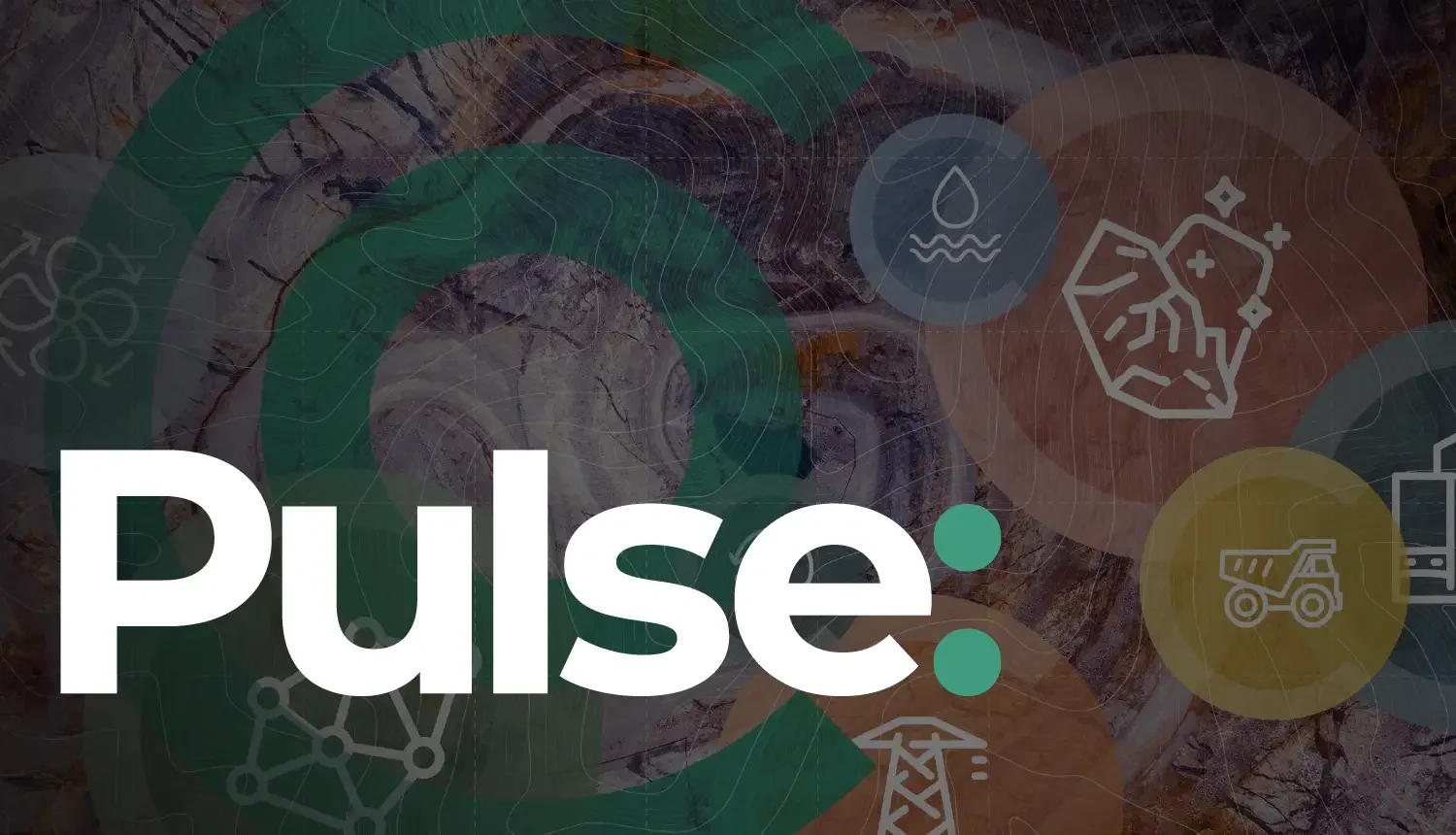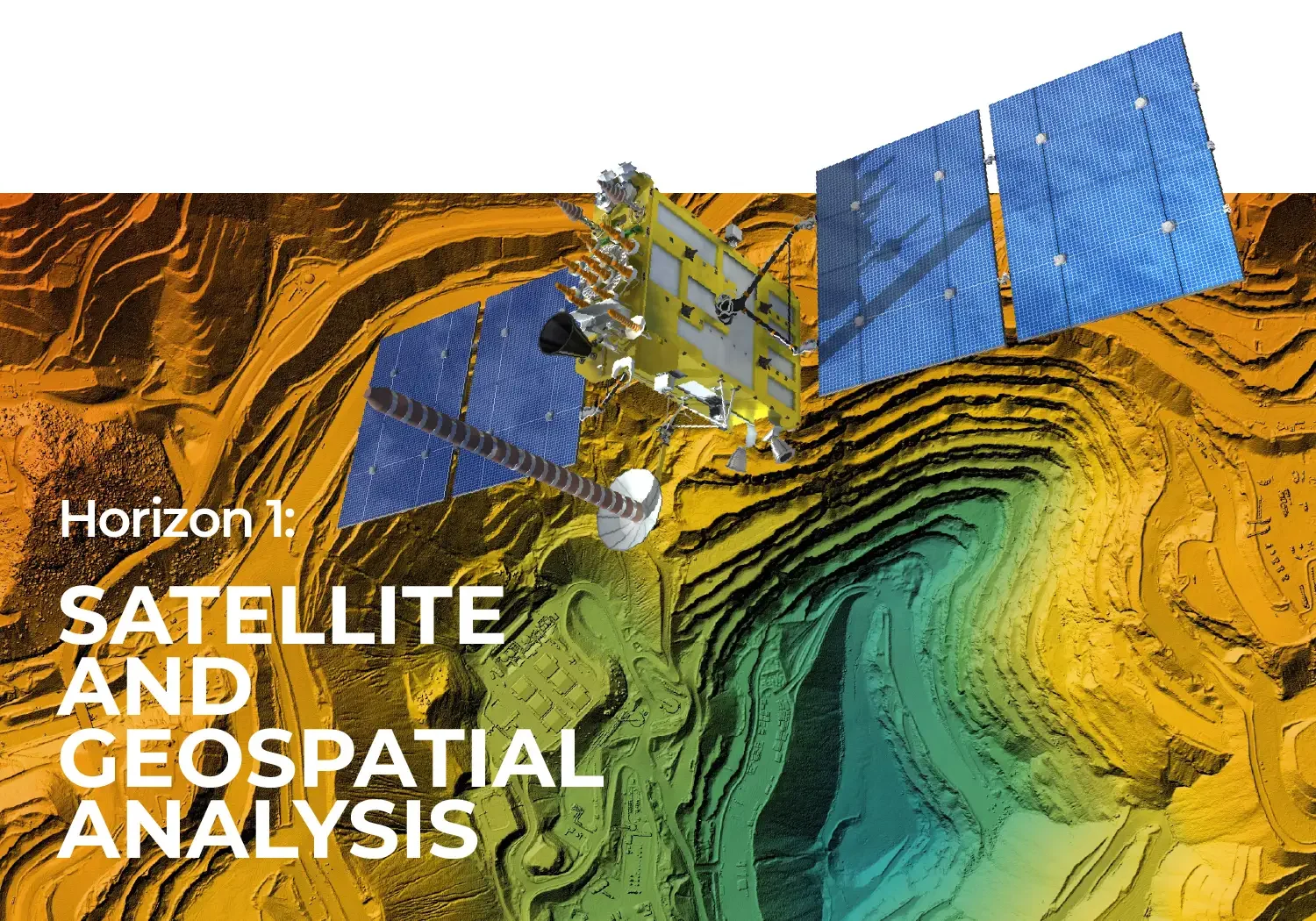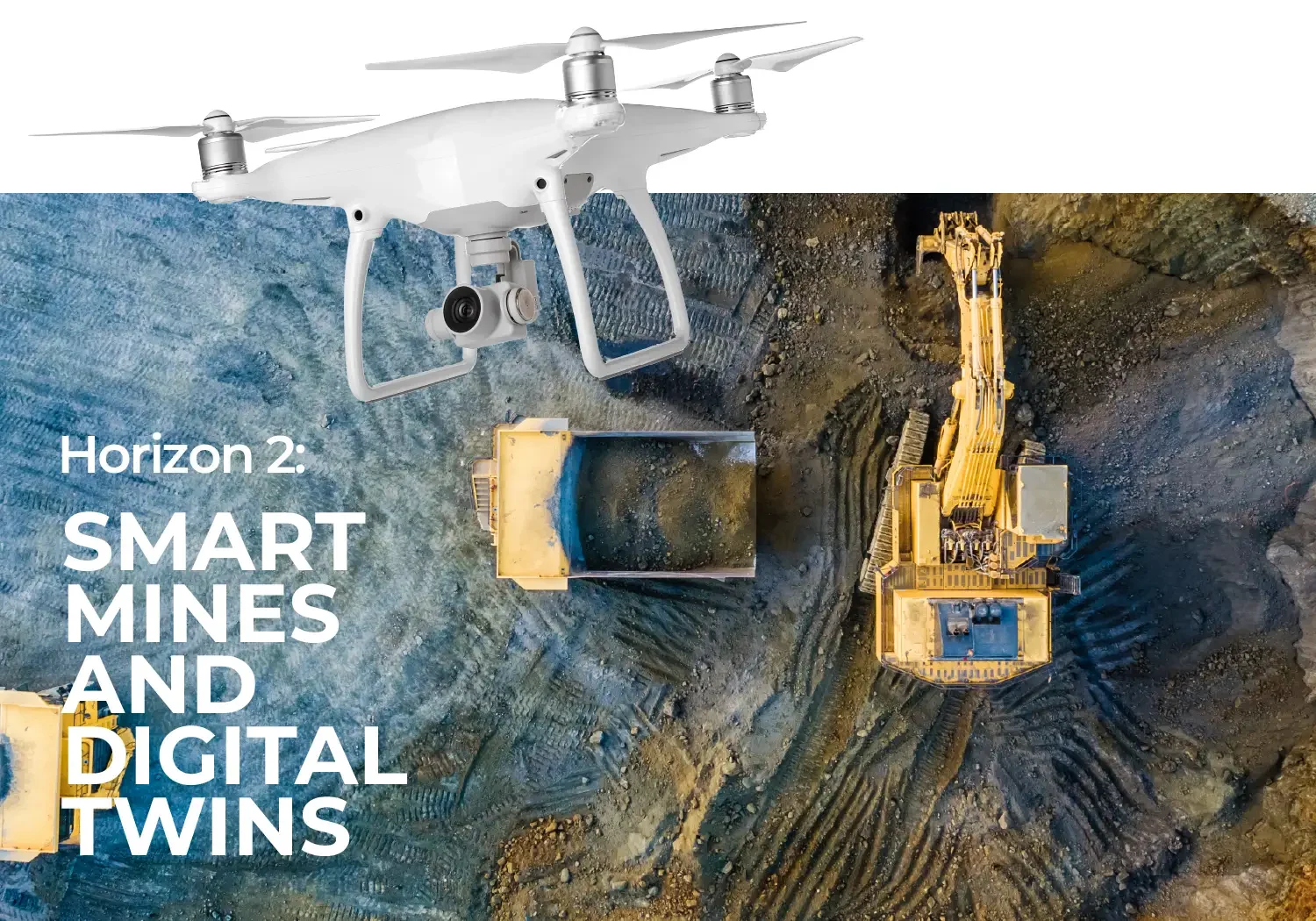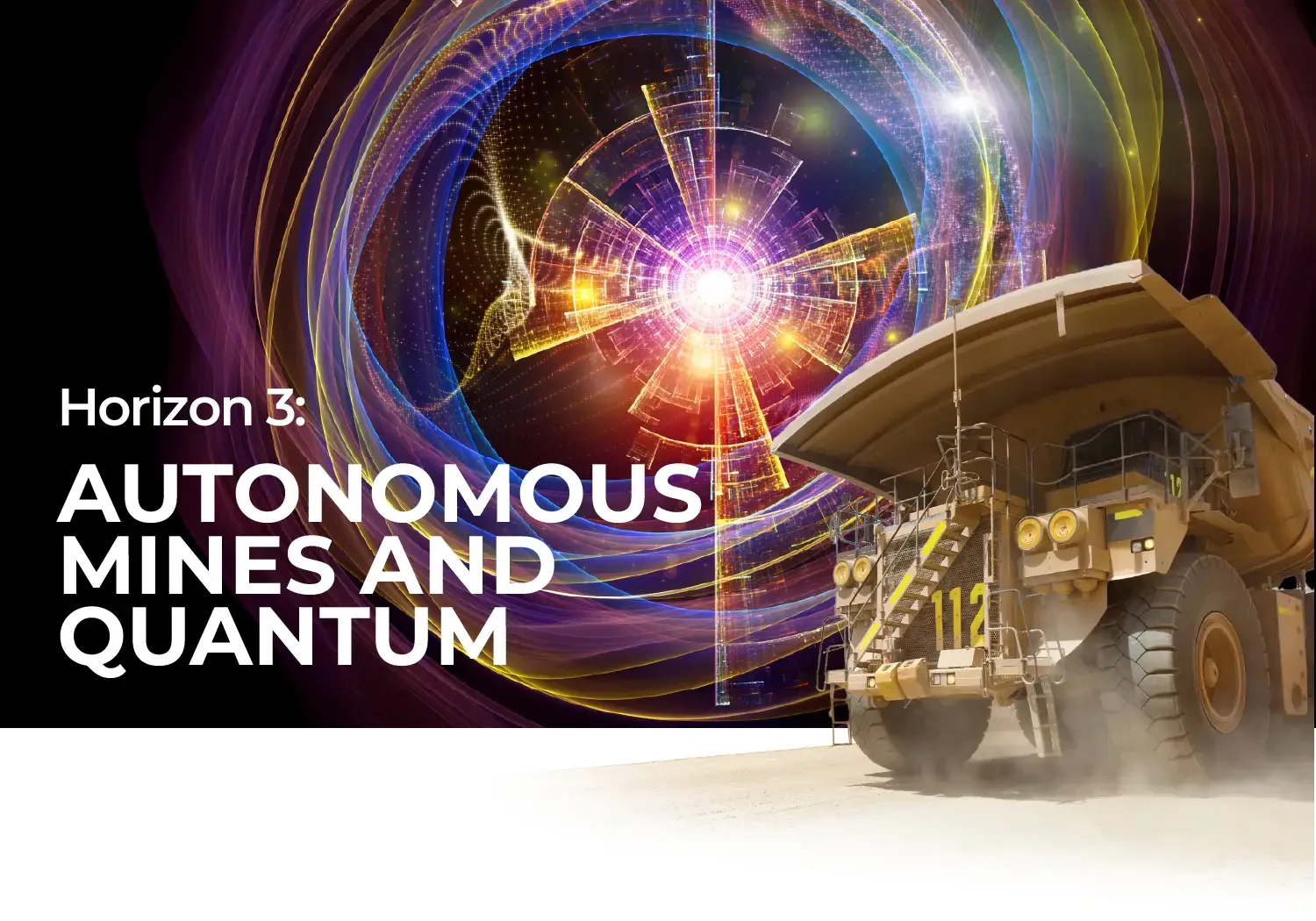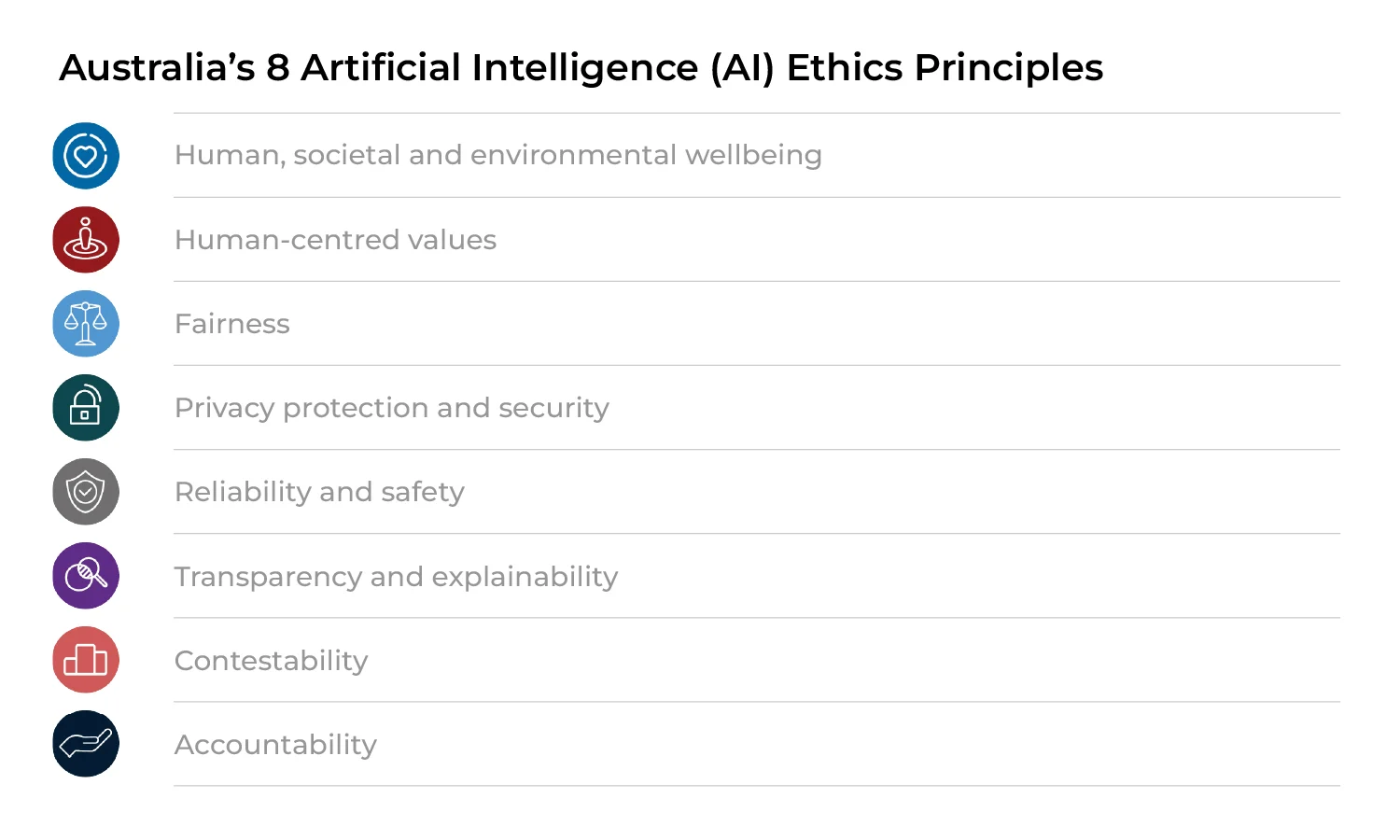
Pulse Innovation Briefing 01 - April 2025
The mining industry stands at a technological inflection point where AI adoption is becoming inevitable regardless of individual company preferences7. The future of mining will be defined not by whether companies adopt AI, but by how effectively they integrate these powerful tools to address industry challenges while capitalising on emerging opportunities in a resource-constrained world.
The sector is poised to become more profitable and efficient through proper AI governance, simultaneously becoming safer and environmentally cleaner. Machine learning tools analysing geological data are improving mineral discovery rates by 20-30%, reducing exploration timelines and lowering costs significantly8 . As digital transformation accelerates, mining companies that strategically embrace AI technologies while carefully managing associated risks will gain competitive advantages in an increasingly complex global marketplace.
This Pulse briefing examines the current state, future trajectory, and challenges of AI implementation in mining operations in 2025, providing executives and stakeholders with actionable insights for strategic planning.
Top of Pulse, Regarding AI, This Month for Mining Executives
Mining executives are increasingly focused on balancing the potential gains of AI implementation against associated risks. Economic uncertainties creating supply chain disruptions have caused operational delays to surge by 18-24% in 2024, pushing executives toward data-driven risk assessment practices6.
The technology promises substantial opportunities to address skills shortages, deliver cost savings, enhance safety protocols, improve operational efficiency, and enable significant carbon footprint reduction7. However, concerns persist about the emerging state of the technology, integration costs, data security, and over-reliance on modelled data. The industry's dual pressures of profit optimisation and decarbonisation goals, coupled with a growing demand for critical and strategic metals in a declining ore grade setting, are compelling mining leaders to accelerate AI adoption while carefully managing implementation challenges in their strategic planning.
The fragmentation of data across operational silos remains a critical concern, with Seequent's 2025 report indicating that 60% of mining professionals still lack effective tools for data-driven decision-making despite recognising its importance23.
BHP's collaboration with Microsoft at Escondida copper mine has applied artificial intelligence and machine learning with the aim of improving copper concentrate recovery. The collaboration has helped save more than three gigalitres of water – as well as 118-gigawatt hours of energy, since FY2221. Executives are also navigating the broader ethical considerations of AI deployment, particularly regarding environmental protection, fair labour practices, indigenous data sovereignty, data access and environmental monitoring. Organisations such as the OECD promote responsible AI use in resource extraction through establishment of AI principles that emphasise ethical considerations, transparency, and sustainability24. As outlined by Corrigan, et. al (2024) ethics-based boundaries for AI applicability and usability continues to emerge in communication with the involved stakeholders, including workers, communities, and others22.
Pulse Innovations - Horizon 1 (Available In-Market Now and the Next 5 Years)
Current AI innovations are already transforming mining operations across the value chain. Advanced mineral exploration solutions are employing machine learning models that integrates geospatial data, satellite imagery, and historical records to pinpoint untapped deposits with unprecedented accuracy1. Companies like KoBold Metals are leveraging these technologies and applying AI to accelerate the discovery of critical rare earth elements. Companies like Rio Tinto and BHP have implemented autonomous haul trucks, trains, and drilling systems that improve safety and productivity outcomes37. Predictive maintenance enabled by AI can reduce downtime by up to 35%, according to PwC, with an estimated $2.1 billion already invested in mining AI solutions6. AI-enabled concentrators are improving metal recoveries by several percentage points while increasing throughput by 10-15%3.
Horizon 1 Snapshot: Discovery enabled by AI
The mining industry is leveraging AI to analyse and interpret geological data to improve ground selection. When built and trained appropriately, ML algorithms can process large and complex data sets and identify patterns and anomalies that may indicate the presence of mineral resources, thus aiding discovery.
Integrating and analysing diverse technical data sources to identify hidden relationships and patterns is a complex challenge. In particular, outdated exploration data collection and storage methods have resulted in inconsistent and low-quality historical datasets, making it difficult to effectively train machine learning algorithms.
A growing number of solutions and companies (including Geoanalytics, KoBold Metals, SenseOre, Earth AI) are tackling this challenge by aggregating all publicly available mineral resource data, often integrating it with a mining company’s exploration data, to create a knowledge repository and then apply proprietary algorithms to analyse and identify prospective exploration targets. ML and AI use large volumes of data and need very high-performance graphics or GPUs, which became commercially available at scale less than ten years ago. Examples include:
Geoanalytics - A Canada-based AI company specialising in mineral exploration. Uses machine learning to analyse geological, geochemical, and geophysical data to identify high-potential mineral targets more efficiently and cost-effectively.
KoBold Metals - A US-based company backed by major investors like Bill Gates' Breakthrough Energy Ventures. Utilises AI and big data to discover critical battery metals (e.g., lithium, cobalt, and nickel) essential for clean energy development.
SenseOre - An Australian company developing AI-driven mineral exploration solutions. Uses its proprietary "Discriminant Predictive Targeting" (DPT) AI technology to process large geoscience datasets and predict mineral-rich locations.
Earth AI - A vertically integrated AI-based mineral exploration company. Develops and applies AI-driven predictive models to find and assess mineral deposits, followed by in-house drilling to test targets.
Learn more about Advanced Technologies and Application related to Discovery:
Advanced Technologies and Applications - ConnectOre
Pulse Innovations - Horizon 2 (Evolving Over the Next 10 Years)
The next decade will see mining operations evolve toward comprehensive and integrated "smart mines" enabled through digital twinning technology2. These virtual models will use real-world data to run simulations and make predictions about mine planning and operations at an unprecedented scale. Advanced digital twins integrating AI with geological, operational, and financial data will enable comprehensive mine plan optimisation. University of Sydney's Net Zero Institute forecast a 30% improvement in resource recovery through the application and integration of these systems25. Examples include:
Realtime analysis DataTwin is a revolutionary platform that transforms mining operations management by enabling real-time supervision, analysis, control, monitoring, and simulation from mine to crusher.
Sensor outputs with accurate geolocation of sensors is a critical component in site planning, monitoring, and hazard evaluation including rockfall events. Geotechnical Center of Excellence (GCE) at the University of Arizona has created a workflow to accurately georeference movements detected in thermal video from a single camera by using topographic digital twins (e.g., DEM, point cloud, or 3D mesh) of a mine site. The solution can be applied to any camera-based monitoring technology, such as seep detection or bench design evaluation.
Augmented intelligence where machine learning systems are trained with massive datasets, will enhance human decision-making across the mining value chain4. Mining companies will increasingly implement AI-driven visualisation technologies, as exemplified by Skycatch's partnership with Teck Resources and NVIDIA to develop immersive real-time simulations of mining operations7. Resource modeling will become more sophisticated, with AI systems capable of creating detailed 3D subsurface maps identifying features such as groundwater systems and ore bodies, accelerating exploration while minimising environmental impact7.
Quantum machine learning applications for mineral exploration, already in development at Curtin University's WA School of Mines, promise to identify subtle mineralisation patterns invisible to current technologies, potentially reversing decades of declining discovery rates. Fully autonomous underground mining systems combining robotics with reinforcement learning algorithms will allow extraction from previously inaccessible or unsafe deposits. The mining workforce will collaborate with cognitive digital workers handling routine decisions while humans focus on strategic oversight. Self-healing processing plants with AI systems capable of adapting to variable ore grades in real-time will revolutionise mineral processing, addressing the industry's declining ore quality.
Innovations in Horizon 3 (Emerging Technologies Coming to Market in 15 Years)
Looking toward 2040, the mining industry anticipates the emergence of superintelligence within the AI ecosystem, as suggested by OpenAI CEO Sam Altman7. These advanced systems will likely outperform human capabilities across multiple mining domains simultaneously. If we imagine a Mine of the Future fully autonomous exploration will become standard, with AI-powered equipment independently identifying new sites, conducting on-site tests, and analysing data without human intervention2. The complete digital transformation of mining operations will create seamless integration across the entire value chain, from exploration to customer delivery. Mining companies will operate within immersive digital environments where AI orchestrates all aspects of mining activities, optimising for efficiency, sustainability, and profitability while continuously learning and improving through advanced algorithms that anticipate market shifts and resource demands.
Quantum-enhanced AI systems will revolutionise mineral discovery by simultaneously analysing millions of geological variables across multiple dimensions, potentially unlocking resources previously deemed uneconomical. Fully autonomous mining ecosystems will operate with minimal human intervention, orchestrating activities from extraction to processing through decentralised AI networks that optimise for environmental impact, community benefit, and profitability. Blockchain-embedded AI agents will enable unprecedented supply chain transparency and adaptability, automatically rerouting resources during disruptions while maintaining ESG compliance. Advanced biomimetic robots inspired by natural tunneling organisms will use swarm intelligence to extract minerals with minimal disturbance.
Perhaps most transformatively, AI-guided in-situ mining technologies will enable resource extraction without physical disturbance of the surface, fundamentally reimagining what constitutes a "mine" in the mid-21st century.
CSIRO is leading the integration of quantum computing and digitalisation to transform Australia’s mining sector. Quantum sensors like SQUIDs, used in CSIRO’s LandTEM technology, have greatly enhanced mineral exploration. Quantum computing enables faster data analysis, improving decision-making and operational efficiency, while post-quantum cryptography strengthens data security. The move towards zero-entry mines, driven by automation and digital tools, is improving safety and reshaping workforce roles. Additionally, digital tracking of mineral provenance promotes sustainability and responsible mining. While challenges remain in data management and automation risks, quantum advancements are set to drive a new era in mining.
Learn more about automation technologies and remote operational coordination:
Digital and Automation - ConnectOre
The Pulse of AI for Policymakers and the Mining Sector
Policymakers and mining sector leaders face complex challenges in governing AI implementation. High integration costs, data security vulnerabilities, and potential overreliance on empirical and modeled data present significant risks5. Compliance costs have spiked by approximately 35% since 2020, forcing strategic reassessment of technological investments6.
Ethical considerations around workforce transitions as automation replaces traditional roles require thoughtful policy frameworks that balance innovation with social responsibility. Regulators are increasingly focused on establishing clear guidelines for AI applications in mining to ensure responsible deployment that considers environmental impacts, worker safety, and community concerns. The mining sector must engage proactively with policymakers to develop balanced regulatory approaches that enable technological advancement while protecting stakeholder interests across the mining ecosystem.
Find out more on Australia’s 8 Artificial Intelligence (AI) Ethics Principles
Conclusion
Artificial Intelligence (AI) has emerged as a transformative force in the metals and mining industry, offering potential to address critical operational challenges including declining ore grades, energy use optimisation, workforce shortages, and fragmented data systems. As the sector grapples with increasing pressure to supply critical and strategic minerals for global decarbonisation while maintaining sustainability commitments, AI is rapidly shifting from experimental technology to essential operational infrastructure. Industry leaders like Rio Tinto, BHP, and Glencore are leveraging AI-powered solutions to optimise processes across the value chain, from exploration to operations and remediation. AI applications are multifaceted and impactful.
The integration of AI into the mining sector represents a transformative shift - currently valued at USD 4.6 billion in 2023, the AI in Mining and Natural Resources Market is projected to reach USD 20.3 billion by 2031, growing at an impressive 20.5% CAGR1.
Do you have questions about topics covered in this Pulse Briefing post that you would like explored in more detail? Have your say and comment on ConnectOre conversation boards conversation boards.
Sources
1 Cutting-Edge Applications of AI in Mining for 2025
2 7 Cutting-Edge Applications of AI in Mining for 2025 - Viso Suite
3 Power of AI: AI's big promises start to deliver for miners adopting new tech
4 Data mining: Technology and the future of mining - Bennett
5 A Peek at AI Revolution in Mining: Promise Meets Peril - Coal Zoom
6 Ultimate Mining Industry 2025: Transformative Trends & Insights
7 A peek at AI revolution in mining: promise meets peril | S&P Global
8 Mining Industry Trends 2025: Smarter, Safer, and More Sustainable
9 Leading Artificial Intelligence (AI) Companies in the Mining Industry
10 The AI Horizon: Defining Mining Industry Priorities Workshop #2 ...
11 Horizon3.ai Expands on Disruptive Value of Autonomous ...
12 Challenges and Opportunities of Implementing AI in the Mining and ...
13 AI Transforming Drilling & Blasting in Mining for 2025 - Discovery Alert
14 Ultimate AI Mineral Prediction Guide for 2025: Proven Strategies
16 Horizon Scanning: Early Signals of the Future - Dow Jones
17 Horizon3.ai Celebrates Significant Growth and Innovations in First ...
18 Five Key Issues to Watch in AI in 2025 - CSET
19 Artificial Intelligence is unearthing a smarter future - BHP
20 How AI Will Reshape the Workplace in 2025 - Cirqle Group
21 Artificial Intelligence is unearthing a smarter future
22 A review of the use of AI in the mining industry: Insights and ethical considerations for multi-objective optimization, Caitlin C. Corrigan, Svetlana A. Ikonnikova

